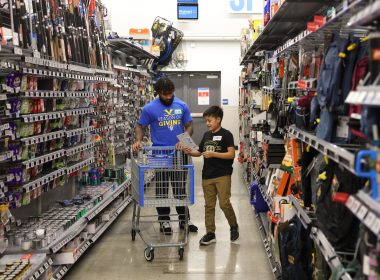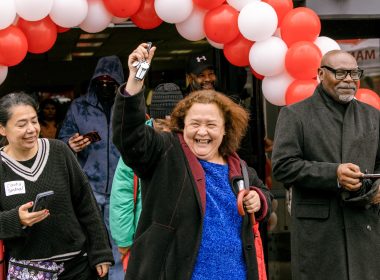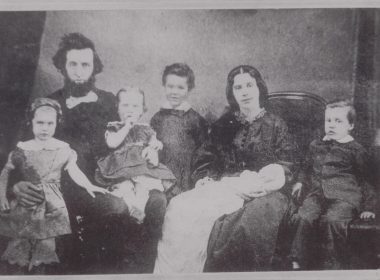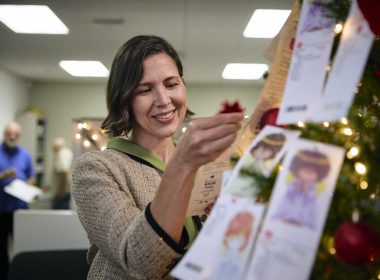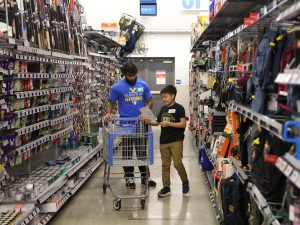New technology helps The Salvation Army’s Community Relations and Development team reach people with the messages that matter most to them.
Across inboxes and Instagram feeds, brands constantly compete for consumers’ attention, recommending products, announcing sales and passing along information.
So how can nonprofits break through the noise to engage people in their mission, raise funds and recruit volunteers?
For The Salvation Army Western Territory Community Relations and Development (CRD) team, the latest strategy involves leveraging advanced technology and artificial intelligence (AI) to reach more people, more effectively—all with human connection in mind.
“It’s not technology instead of relationships. It’s technology as a pipeline and a pathway to relationships,” said Territorial Executive Director of Development Maria Todaro.
And the first step in any relationship is to get to know one another.
When someone signs up to volunteer with The Salvation Army or makes a donation, their contribution is recorded and stored in a secure database. Over time, as a constituent develops a relationship with The Salvation Army, their history reflects their individual preferences. What causes inspire someone to engage? What does engagement typically look like for them?
“We’re getting a bigger picture,” Todaro said. “So if you drop off some clothes, go work out at the Kroc Center and then put money in a virtual kettle, we know all of those things, which gives us a 360-view of your engagement with The Salvation Army.”
The complete picture isn’t new—data collection and storage have long been standard procedure for marketers. But now, AI can step in to help organizations like The Salvation Army efficiently interpret and act on the information.
“It’s about respecting their time and attention,” said Territorial Donor Data Management Director Elaine Lofton.
“It’s not technology instead of relationships. It’s technology as a pipeline and a pathway to relationships.”
Maria Todaro, Territorial Executive Director of Development
If a person mostly volunteers with Salvation Army youth programs, they likely want to hear more about back-to-school initiatives or donation opportunities for summer camps. But if someone else always hosts a Virtual Red Kettle and sorts toys at Christmastime, they might want fewer emails in April and more emails in November. AI helps honor those implicit preferences.
“AI can help us figure out what we should be talking about,” said Territorial Director of Digital Strategy Brenda Jones. “What are those interests for that person? Then they can be put on a journey and get more information about topics they’re interested in.”
Research suggests the strategy is mutually beneficial as consumers increasingly find value in intentional and personal communication from brands. A McKinsey study found 71 percent of consumers said they expected brands to provide personalized communications or services and 76 percent of consumers said they were frustrated when communications weren’t personal or relevant to them.
According to Lofton, using technology for personalization helps facilitate human conversations.
“We take the information that constituents provide to us and we store it in a secure way, and then we use it to communicate back,” she said. “There’s a good balance there. We try to become modern, and be good stewards of our contributions and to utilize new technology to make our work efficient. But always realizing we want to communicate with real people from real people.”
And real relationships require more than knowledge and communication—they require trust.
To keep information safe, the CRD team is integrating AI inside a closed system. Instead of sending information outside the organization—where third-parties might use it to develop their own datasets—the team is adding new software to their existing technology with robust safeguards already in place.
“All of that information stays within our ecosystem and we’re not pulling that information from anywhere else,” Jones said, noting there are strict guardrails around data usage, as well as AI use.
With a foundation of safety and trust, The Salvation Army can more effectively provide donors and volunteers with meaningful opportunities to do good. In turn, passionate people provide crucial support for The Salvation Army’s mission to meet human needs without discrimination.
Along the way, the CRD team aims to nurture these relationships.
“We are working as a team to be more donor-centric,” Todaro said. “How can we best come together to make sure we’re serving donors in the best way that we can?”
Do Good:
- Are you best suited to Do Good in disaster relief? Mental health? Social justice? Take our What’s Your Cause quiz and discover where you can make the biggest impact today.



